Related Research Articles

A silent film is a film without synchronized recorded sound. Though silent films convey narrative and emotion visually, various plot elements or key lines of dialogue may, when necessary, be conveyed by the use of inter-title cards.
The following is an overview of the events of 1895 in film, including a list of films released and notable births.
The following is an overview of the events of 1894 in film, including a list of films released and notable births.

The Kinetoscope is an early motion picture exhibition device, designed for films to be viewed by one person at a time through a peephole viewer window. The Kinetoscope was not a movie projector, but it introduced the basic approach that would become the standard for all cinematic projection before the advent of video: it created the illusion of movement by conveying a strip of perforated film bearing sequential images over a light source with a high-speed shutter. First described in conceptual terms by U.S. inventor Thomas Edison in 1888, it was largely developed by his employee William Kennedy Laurie Dickson between 1889 and 1892. Dickson and his team at the Edison lab in New Jersey also devised the Kinetograph, an innovative motion picture camera with rapid intermittent, or stop-and-go, film movement, to photograph movies for in-house experiments and, eventually, commercial Kinetoscope presentations.

Hula is a Hawaiian dance form expressing chant (oli) or song (mele). It was developed in the Hawaiian Islands by the Native Hawaiians who settled there. The hula dramatizes or portrays the words of the oli or mele in a visual dance form.

House on Haunted Hill is a 1959 American horror film produced and directed by William Castle, written by Robb White and starring Vincent Price, Carol Ohmart, Richard Long, Alan Marshal, Carolyn Craig and Elisha Cook Jr. Price plays an eccentric millionaire, Frederick Loren, who, along with his wife Annabelle, has invited five people to the house for a "haunted house" party. Whoever stays in the house for one night will earn $10,000. As the night progresses, the guests are trapped within the house with an assortment of terrors. This film is perhaps best known for its promotional gimmick Emergo.
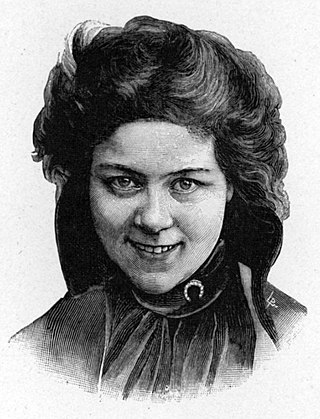
Loie Fuller, also known as Louie Fuller and Loïe Fuller, was an American dancer and a pioneer of modern dance and theatrical lighting techniques.

A ballerina skirt, also referred to as a Juliet skirt or a romance skirt, is a full skirt that is worn by ballet dancers and is composed of multiple layers of fabric. Ballet dancers wear the longer version of the skirt, while for fashion purposes the skirt is worn shorter, like a mini skirt for better dancing, the cocktail version. The standard ballerina attire is composed of fabric with a wire, in order for tulle to be visualized as stiff when it is around their waists. The Juliet styled skirt is free-flowing and covers the majority of their legs to place a high emphasis on the performer's legs.
Film tinting is the process of adding color to black-and-white film, usually by means of soaking the film in dye and staining the film emulsion. The effect is that all of the light shining through is filtered, so that what would be white light becomes light of some color.

The Butterfly World Tour was the third concert tour by American singer-songwriter Mariah Carey. The tour promoted Carey's album Butterfly (1997), and included songs from several of her previous albums. The tour visited Asia, Australia and the United States, with rehearsals taking place in December 1997. Starting on January 11, 1998, the tour spanned five shows in Asia, six in Australia, and one in Hawaii, US. Throughout the tour, Carey varied hairstyles and outfits, as well as song selections.

The Surprise of a Knight is a gay pornographic hardcore film from the United States. Most likely released in 1929, it is notable for being the earliest known American pornographic film to depict exclusively homosexual intercourse.
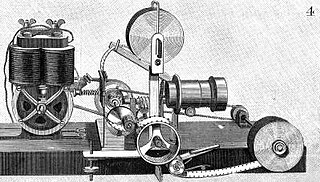
The Phantoscope was a film projection machine, a creation of Charles Francis Jenkins and Thomas Armat. In the early 1890s, Jenkins began creating the projector. He later met Thomas Armat, who provided financial backing and assisted with necessary modifications.
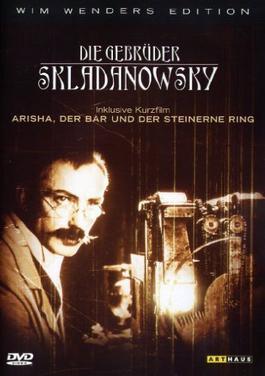
A Trick of Light is a 1995 German biographical film directed by Wim Wenders. The film was made with the students of the University of Television and Film Munich and is a combination of docudrama, fictional reenactment, and experimental photography to show the birth of cinema in Berlin where Max Skladanowsky and his brother Emil built a projector they called the Bioscop.

Nellie Wallace was a British music hall star, actress, comedienne, dancer and songwriter who became one of the most famous and best loved music hall performers. She became known as "The Essence of Eccentricity". She dressed in ultra-tight skirts — so tight in fact, that she would lie down on the stage and shuffle back and forth on her back to pick up whatever she had contrived to drop. Her hat sported a lone daisy, feather, or fish bone, and once even a lit candle — supposedly, so she could see where she was going and where she had been.

Belly dance is a Middle Eastern dance that originated in Egypt, which features movements of the hips and torso. It has evolved to take many different forms depending on the country and region, both in costume and dance style; with the Egyptian styles and costumes being the most recognized worldwide due to Egyptian cinema. Belly dancing in its various styles and forms is popular worldwide with many schools around the globe practicing it.
The serpentine dance is a form of dance that was popular throughout the United States and Europe in the 1890s, becoming a staple of stage shows and early film.
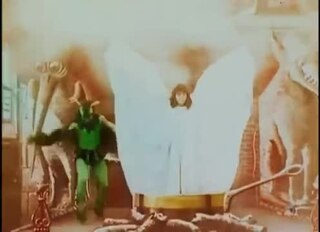
The Pillar of Fire, initially released in America and Britain as Haggard's "She"—The Pillar of Fire and also known as La Colonne de feu, is an 1899 silent trick film directed by Georges Méliès based on H. Rider Haggard's 1887 novel She: A History of Adventure.
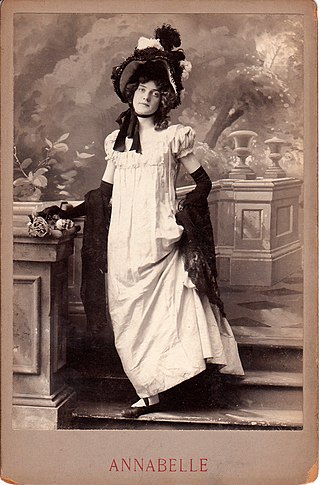
Annabelle Moore, also known as Peerless Annabelle, was an American dancer and actress who appeared in numerous early silent films. She was the original Gibson Girl in the 1907 Ziegfeld Follies.
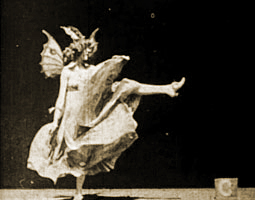
Annabelle Butterfly Dance is an 1894 American short film. It is one of the several silent films produced by the Edison Manufacturing Company starring Annabelle Moore. In the film, Annabelle performs one of her popular dances while wearing a butterfly costume.

Minnie the Moocher is a 1932 Betty Boop cartoon produced by Fleischer Studios and released by Paramount Pictures.
References
- ↑ Yumibe, Joshua (2012). Moving Color: Early Film, Mass Culture, Modernism. Rutgers University Press, ISBN 9780813552989
- ↑ Perry, Ted (2006). Masterpieces of Modernist Cinema. Indiana University Press, ISBN 9780253347718
- ↑ Barker, Jennifer M. (2009). The Tactile Eye: Touch and the Cinematic Experience. University of California Press, ISBN 9780520258426